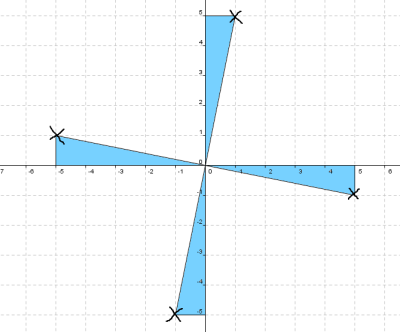Or search by topic
Number and algebra
Geometry and measure
Probability and statistics
Working mathematically
Advanced mathematics
For younger learners
Attractive Rotations



- Problem
- Getting Started
- Student Solutions
- Teachers' Resources
Why do this problem?
This problem provides a simple starting point creating attractive patterns using rotations, with the potential to go much further - exploring rotational symmetry, understanding the relationship between coordinates when rotating through multiples of $90^{\circ}$, and practising accurate construction with ruler, compasses and protractor are just a few ideas.
Work on this problem could provide an excellent opportunity for forging cross-curricular links with Art and Design departments.
Possible approach
These printable resources may be useful: Attractive Rotations,
Attractive Rotations Extension.
Begin by showing learners this image, and give them the chance to discuss in pairs anything they notice about it. Share ideas, and ask learners to suggest how they think the image might have been created.
Key questions
How can you use a coordinate grid to help you to rotate each point through multiples of $90^{\circ}$ around $(0,0)$?
Can you use an isometric grid to rotate a shape through multiples of $60^{\circ}$?
What do you notice about the rotational symmetry of images based on rotations such as $30^{\circ}$ or $72^{\circ}$?
Possible support
Learners could begin by rotating single points through multiples of $90^{\circ}$ using the technique suggested below:

Possible extension
What is the rotational symmetry of your final image if you rotate through multiples of $80^{\circ}$ or $135^{\circ}$?
You may also like
Illusion
A security camera, taking pictures each half a second, films a cyclist going by. In the film, the cyclist appears to go forward while the wheels appear to go backwards. Why?
Weighty Problem
The diagram shows a very heavy kitchen cabinet. It cannot be lifted but it can be pivoted around a corner. The task is to move it, without sliding, in a series of turns about the corners so that it is facing the other way round.
Rolling Triangle
The triangle ABC is equilateral. The arc AB has centre C, the arc BC has centre A and the arc CA has centre B. Explain how and why this shape can roll along between two parallel tracks.

